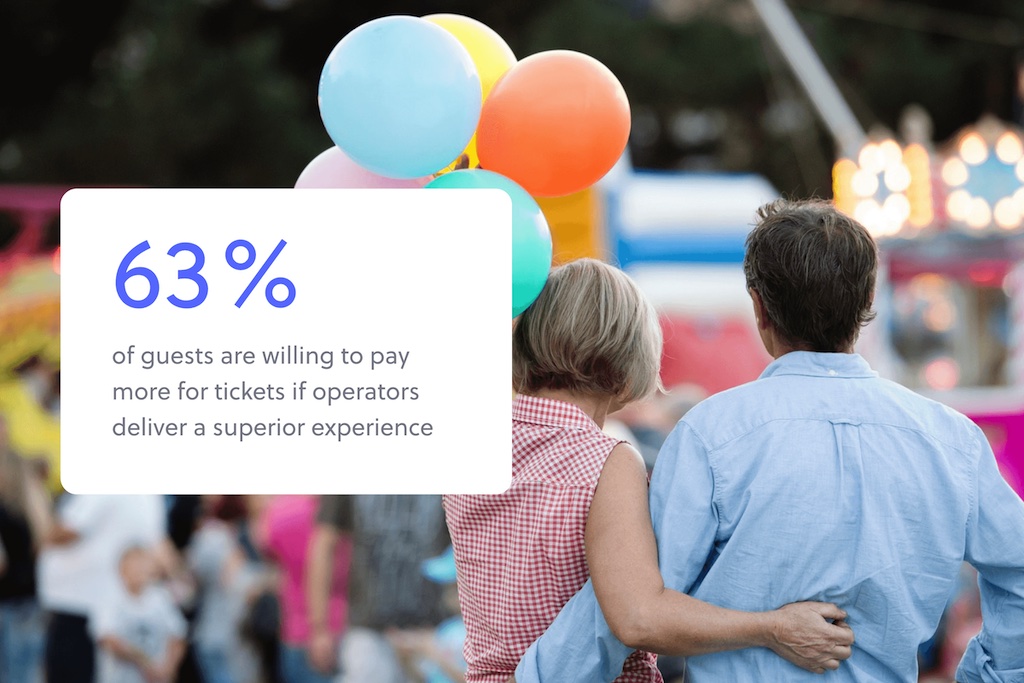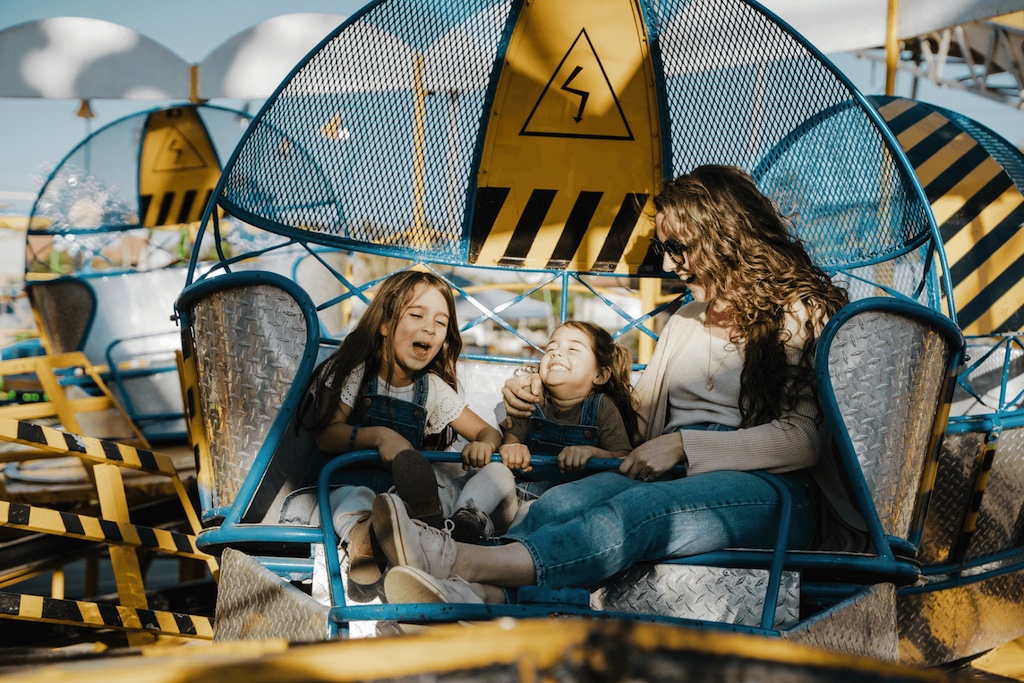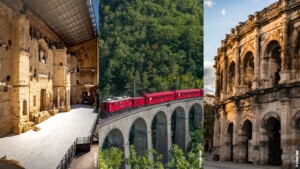by Mark Locker, Attractions.io
Millions of guests visit attractions every day expecting magical moments and unforgettable experiences. Yet, in an era where digital convenience shapes our daily lives, many venues are falling short of these expectations, leaving guest satisfaction and revenue opportunities on the table. Our research shows that while 63% of guests would pay more for superior experiences, most venues struggle to deliver the seamless digital journey modern visitors expect.
At Attractions.io, we’ve spent over a decade partnering with world-class venues to transform their guest experience through technology. Our platform powers the digital journey for millions of visitors across global attractions, giving us unique insights into what makes exceptional guest experiences.
To better understand the growing gap between guest expectations and reality, we conducted comprehensive research involving over 1,000 consumers and 200 operators—and the results were eye-opening.
The cost of falling behind
Today’s guests interact with seamless digital experiences from brands like Netflix, Amazon, and Uber before they ever enter your attraction. These interactions set a high bar for digital convenience—one that our research shows most venues aren’t meeting:
- 56% of attraction guests report being either disappointed with digital experiences or finding them distracting
- Only 23% say their pre-visit digital experiences improved their visits
- 30% find existing digital tools too limited for their needs
These statistics aren’t just numbers—they represent missed opportunities to delight guests and drive revenue. When pre-visit experiences fall flat, venues lose crucial chances to build excitement, drive advance purchases, and increase average guest spend. When on-site digital tools frustrate rather than help, guests spend more time confused and waiting in lines than making memories and exploring.
Understanding the disconnect
The heart of this problem lies in readiness: only 38% of attractions feel prepared to make the technological changes needed to meet guest demands.
This lack of preparedness shows in how venues approach the guest experience. While guests overwhelmingly want digital tools that make their visits smoother and more enjoyable—like food and beverage ordering (33%) and personalised offers (26.4%)—operators are focusing elsewhere, prioritising future-looking technologies like AI assistants (59%) and virtual reality experiences (58%) while leaving fundamental guest needs unmet.
From our research, the top three barriers that emerged were:
- Resource Constraints—Over 70% of attractions cite resource limitations as their primary challenge, spanning budget constraints (21.8%), lack of technology expertise (17.5%), and team/time constraints (16.5%). Many are working with outdated infrastructure and lack the combination of talent, time, and funding needed to deliver better digital solutions.
- Strategic Gaps—15.5% of operators acknowledge they lack the strategy and customer insights needed to make informed decisions about digital experience improvements. Without clear data on guest needs and preferences, investments may be misaligned with actual guest expectations.
- Leadership Buy-in—10.2% of venues report insufficient leadership support for digital transformation initiatives, highlighting the need for greater alignment between operational needs and organisational priorities.
The good news is that operators seem to recognise their limitations: 60% believe they would be more prepared to deliver top-tier digital solutions if they had access to AI consulting and development resources. The next step is to address these limitations in a way that aligns with guest expectations.
The impact of subpar technology
When guests experience friction in their digital journey, the impacts ripple far beyond momentary frustration. Subpar digital guest experiences affect three critical areas:
Revenue generation
- Missed pre-visit upsell opportunities
- Reduced in-park spending due to lack of awareness and payment friction
- Lower conversion rates for membership and return visits
Guest satisfaction & loyalty
- Decreased likelihood of return visits
- Reduced word-of-mouth recommendations
- Lower overall satisfaction scores such as NPS
Operational efficiency
- Increased staffing needs for manual processes
- Higher queue times and guest complaints
- Missed opportunities for data-driven insights
Success through strategic technology implementation
Understanding the challenges is only half the battle. The key to success lies in strategic implementation that prioritises guest needs while maximising return on investment. A recent experience from our team illustrates the power of well-implemented technology:
Learning from Adjacent Industries
Our VP of Product, Peter O’Dare, recently experienced the impact of well-implemented technology during a trip to Amsterdam. When his flight was cancelled, he needed a last-minute hotel booking. Using the hotel chain’s AI tool while still in the airport, he managed the entire process via WhatsApp—from reservation to payment to asking questions. The AI understood his context and guided him through a seamless process without requesting unnecessary information.
This experience demonstrates how the right technology can turn potentially stressful situations into smooth, satisfying interactions.
Four steps to transform digital guest experiences
1. Build trust through transparency
Privacy and data security are top concerns for today’s consumers—only 33% of guests feel confident about how attractions handle their data. Success requires clearly explaining how data sharing enhances the guest experience and unlocks personalisation. You should ideally provide granular opt-in options that empower guests to make informed decisions around their data.
2. Understand your guest journey
Start with a customer-centric journey map to identify pain points. Use voice-of-customer research to uncover improvement opportunities. Leverage digital capabilities to study heatmaps and gather post-visit feedback. The more you understand your guests’ journey, the greater your opportunity to meet their needs every step of the way.
3. Meet your guests where they are
Success means realigning investments to match guest priorities—focusing on the essential digital touchpoints that make visits smoother and more enjoyable. Think mobile ordering that reduces waiting, digitised tickets for convenient entry and personalised suggestions to help every guest make the most of their visit.
By meeting guests where they are rather than where we think technology should be, operators can deliver immediate value while building trust for future innovations.
4. Leverage AI for operational efficiency
Just as Pete’s hotel guided him through booking with conversational AI, similar technology can transform attraction experiences. Attractions.io’s new AI tool, launching later this month, is a perfect example of this. It integrates directly into our mobile platform to provide real-time, intelligent responses to complex questions, enhancing guest satisfaction through personalised assistance.
Ready to transform your guest experience?
The gap between guest expectations and reality represents both a challenge and an opportunity. Attractions that act now to align their digital experience with guest needs will capture the 63% of visitors willing to pay more for superior experiences.
Attractions.io offers a comprehensive platform that addresses the entire guest journey, from pre-visit planning to on-site personalisation and post-visit engagement. Our team brings deep industry expertise and a track record of successful implementations across global attractions.
Want to learn how we can transform your guest experience? Contact us—we’re always happy to share our experiences.
See Mark Locker speak on our Guest Journey panel at the Festival of Innovation, 15 – 16 January 2025. Register for free here.








